Johor Darul Takzim (JDT) created a minor piece of history for South East Asian domestic football recently when a convincing performance saw them see off Hong Kong’s South China to win through to their second straight AFC Cup semifinal. They thus became the first team from South East Asia to achieve that feat in the 12 years of the competition.
This latest ‘high’ comes during a year in which they have already won the FA Cup, the Malaysia Super league for the third consecutive time, and the Malaysia Charity Shield. This success is no accident. It has been well financed, and controversial in many ways. But it is no accident. It is the result of vision, execution, resourcing and – ultimately – planning. Long-term planning.
The active JDT Facebook page produces some creative slogans in their multiple postings. One that really struck a chord said; “Don’t tell people your dreams, show them”. The headline describes better than anything exactly what JDT are all about. JDT – under the guidance of the Tunku Makhota of Johor (TMJ) – have a vision. A clear vision. And they have delivered on what they say is going to happen.
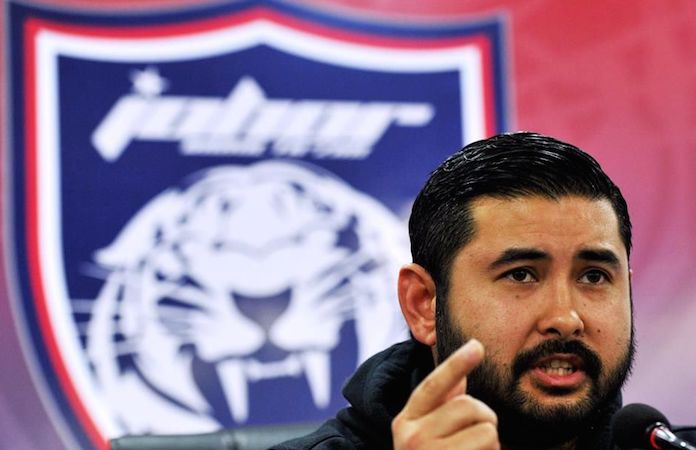
The one blot on the JDT landscape is their absence from the knockout stages of the 2016 Malaysia Cup which took place the weekend before their AFC Cup Quarter Final. But even that absence can be put into context.
JDT have a dream to be a big name in Asian football. Not Malaysia. Not ASEAN. Asian. That is the vision of TMJ. So while there’s no doubt that JDT would have liked to have been in the knock out phase of the Malaysia Cup, a quick look at JDT’s team selections in the early stages of the competition’s group games showed exactly where they placed the Malaysia Cup in terms of priority.
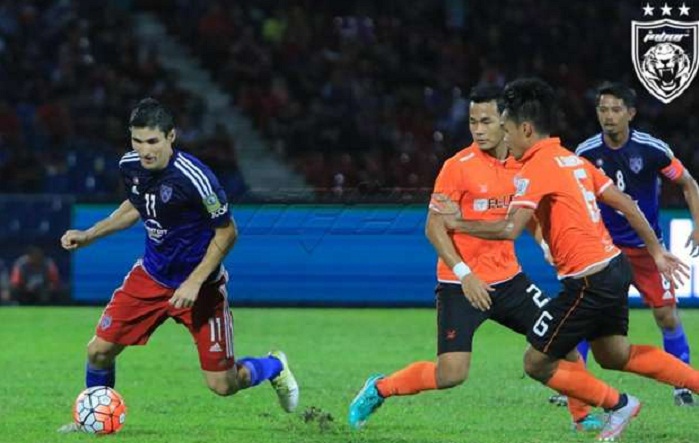
None of the all-important foreign players at JDT (Pererya Diaz, Lucero, Haris Harun or Marcos Antonio) played in any of the first three Group games. By the time they were introduced, JDT had fallen too far behind the rest to make up the ground. It seems – though isn’t claimed – as though the management at JDT looked at the fixtures they faced in the season, and prioritized their targets.
Thus the Malaysia Cup – for so long the be-all and end-all of Malaysian domestic football ambition – was deemed to be secondary to progress in the AFC Cup and the Malaysia Super League. Many clubs in England put the third ranked League Cup in a similar “nice-but-not essential” category. It is a blow to the prestige of the Malaysia Cup that JDT didn’t prioritise it over the AFC Cup. But it is an indication that JDT do, indeed, have a plan.
And look at the benefits JDT obtained by NOT having their squad involved in a Malaysia Cup quarterfinal. Their players looked rested and fresh after a weekend in their plush training complex. The 2-1 victory over South China in the second leg was much more convincing than the score line suggests. Azamuddin Akil, Fazly Mazlan and Azinee Taib all struck the woodwork; Safiq Rahim had a penalty saved, and South China’s goal came with virtually the last kick of the game. They may have dropped the ball in the first leg of the semi-final tie against Bengaluru, with nothing has been set in stone, with the second leg still to play for.
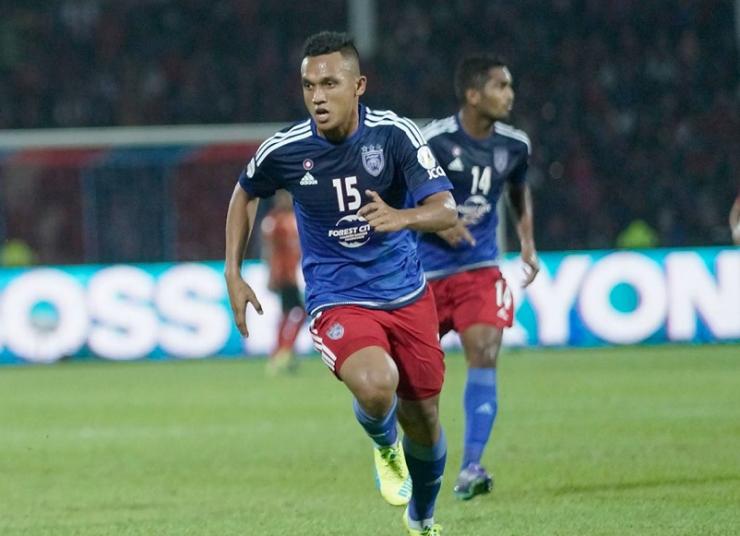
Mention of Fazly and Azinee brings us to another of the JDT “dreams”. That is for the club to become dominated by homegrown and home-trained players. It is no idle statement or meaningless dream. The headlines since 2012 may have been made by JDT’s aggressive acquisition of most of the established names in Malaysian football (Safiq Rahim, Aidil Zafuan, S Kunanlan, Azamuddin Akil, Asrif Nasrulhaq and Amirul Hadi Zainal are just six of a whole host of players aggressively and expensively recruited from other Super league clubs as JDT established themselves as the top team in the country), but a look at the starting line up in both AFC Cup quarter-final matches against South China saw local lads Fazly Mazlan at left back, and Azinee Taib on the left side of the attack. The direct competition for their places in the team are established internationals such as Asaruddin Putra and current national captain, Amri Yahyah.
So, JDT clearly had a plan in place. First – buy yourself to a position near the top of the tree; Then – invest in marketing your product relentlessly and effectively; Put down roots – which include a major financial investment in new, state-of-the-art training facilities, and work has already started on a brand new made-for-football stadium – that will enable the club to develop a momentum of its own.
In terms of developing players, young players are given a chance to develop – even as JDT try to establish themselves as an ASEAN, then Asian footballing force. An example is Dominic Tan who was elevated/transferred from JDT II to JDT.

That JDT II team is seen as a breeding ground for developing young talent. Five recent signings for JDT 2 have come from the Frenz United Academy – more of which we will hear about later – and all five are getting competitive football in a competitive Premier League. The combination of a few gnarly veterans and a couple of good imports allied to home-trained players means the likes of Shafiq Shaharuddin, Hafiy Haikal, and the Frenz United recruits such Hadi Fayyadh, Syafiq Heelmi and Izzafiq Ruzi have all been given opportunities to prove their professionalism and their worth.
JDT’s success in the AFC Cup shows that not only does the club have a plan and a dream, they live by their words: “Don’t tell people your dreams. Show them”. Controversially, though, the JDT dream clashes somewhat with the short-term objectives of the national team as seen by the retirements of Safiq, Kunanlan, Amirul Hadi and Aidil Zafuan from International duties. The State/Club versus Country debate is raging wildly and JDT’s ambitions have thrown into the limelight.
There was a notorious American salesman called Zig Ziglar who coined a couple of phrases in the 1970’s that seem to have resonance with the passionate, thorny subject of Malaysian domestic football in 2016. One phrase was: “If you can dream it, you can achieve it.” This can easily be relatable to the JDT story over the past four years.
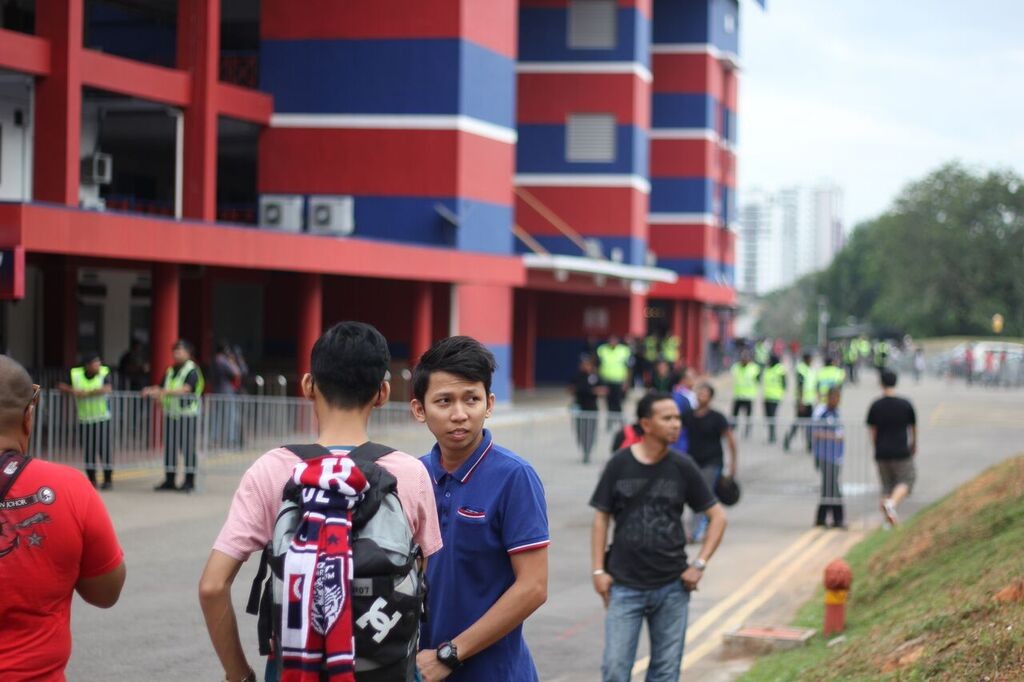
By contrast. Recently, when Malaysia’s junior representatives at under 16 and under 19 went out of regional competitions at AFC and AFF level without seriously competing for a place for even the knock-out rounds of either competition, another of Ziglar’s most memorable quotations; “If you aim at nothing, you will hit it every time” came to mind.
“IF YOU AIM AT NOTHING, YOU WILL HIT IT EVERY TIME”
If Malaysia are struggling at international level and – despite improvement from the 10-0 debacle in Abu Dhabi 12 months ago, results on the Oceania Tour, and the numbing 3-0 defeat to Indonesia earlier this month suggest that, despite a ton of hard work from the playing and coaching staff – clearly they are, what is the plan to put this right?
It must be more than the short-term objectives of doing well in the AFF Suzuki Cup for Datuk Ong Kim Swee, or winning the 2017 SEA Games for Frank Bernhardt. Both national coaches are working with the best players at their disposal in Malaysia, and yet both are finding football success extremely difficult. Bernhardt’s SEA Games “Project” side recently drew and lost games in a two-match series at home to Bahrain. That was preceded by defeat to Thailand in the Four-Nations tournament in Melaka. Winning the SEA Games now looks like a big ask.
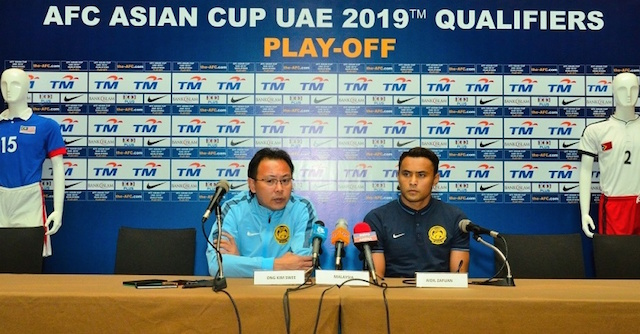
This isn’t a critique of Ong Kim Swee or Bernhardt, as they can only work with the tools/players available to them. Indeed, both are working under restrictions as they look to achieve their own Key Performance Indicators (KPI’s). Bernhardt clearly believed that he was going to get access to his squad far more regularly than he has done, and Datuk Ong Kim Swee’s options have been reduced when JDT’s demands on their players persuaded four key players to retire from the international scene.
But competing for SEA Games gold is surely just a basic starting point. And that was achieved in 2009 (and 2011). We thought we had the start of something reasonable with that squad – especially when the same group went on to win the Senior AFF Suzuki Cup the year later. But that looks to have been a false dawn based on a strong group of players responding to a specific coach and mentor.
When you look closer at the junior level there are reasons to wonder what is the dream? What is the plan to achieve the dream? Bernhardt’s under-19 squad couldn’t qualify from the group stages in the regional AFF Championships in Thailand, and were embarrassed by Timor Leste en route.
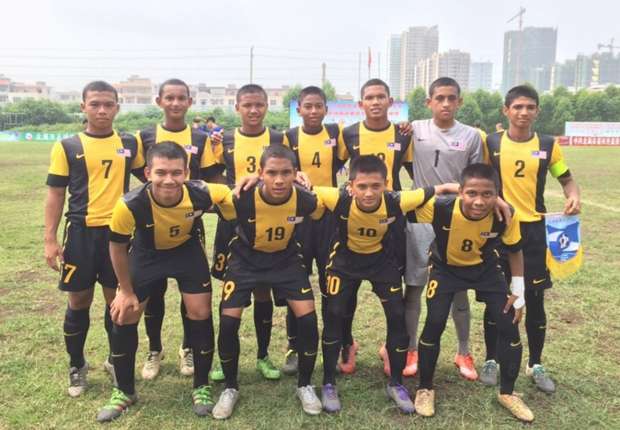
And the under-16’s – represented by the Pahang Sports School – were unable to build upon the performance of the 2014 team in making it to the quarter-finals of the AFC Championships. They were well beaten by both Oman and Korea, and with only a gutsy – though very fortunate – draw with Iraq to show for their efforts.
You don’t want to read too much into results at junior level, but you can look at the style of play, physical attributes and choice of players available to the coaching staff to see if the system is producing a group of players who may develop into good professional players. Having commentated (for Fox Sports) on the U-16 team, Malaysia worked feverishly on the pitch, but were out of their depth in the AFC Championships. Korea’s players, for example, were all (bar one) attached to professional clubs, and the physical, tactical and technical differences were apparent.
It’s also reasonable to ask if any kind of a system is in place to produce the right kind of results. Is it mere coincidence that when, in 2014, Malaysia under-16’s under S Balachandran played regular competition against good clubs and academies in the Frenz United sponsored Asia Champions Trophy they went onto the quarter-finals?
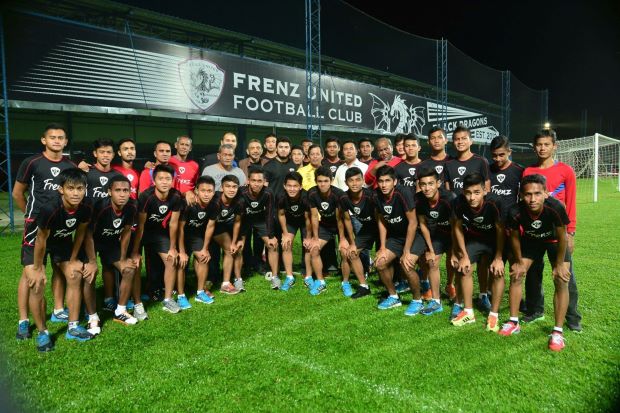
This year, there is no regular competitive international style competition for the under 16’s and – whilst they won their AFF qualification group with ease – the difference between the AFF and AFC competitions was a chasm for which, according to Somasundram, Malaysia were confounded by the intensity of the opposition. If Malaysia are to genuinely compete on the Asian level, then they must be exposed to an intensity of competition that helps them prepare. Isn’t that one of the purposes of the Sports Schools at Bukit Jalil, Pahang and Johor?
“A GOAL PROPERLY SET, IS HALFWAY ACHIEVED”
Rizal Hashim’s excellent blog (RizalHashim.blogspot.com) outlined recently that it’s just over 9 years since the catastrophic joint hosting of the 2007 AFC Cup after which Malaysian international football was described at being at its lowest ebb. Calls were made then that there was “an urgent need to address pertinent issues with regard to the future of Malaysia football”.
We’re also coming up to the 10-year anniversary of FAM endorsing Robert Albert’s Road Map for Malaysian football that called for – amongst other things – a competitive National Schools League and a competitive National Amateur League system beneath a professional system. Underpinning all of this was to be an organized way to develop youth players in states, universities and clubs.
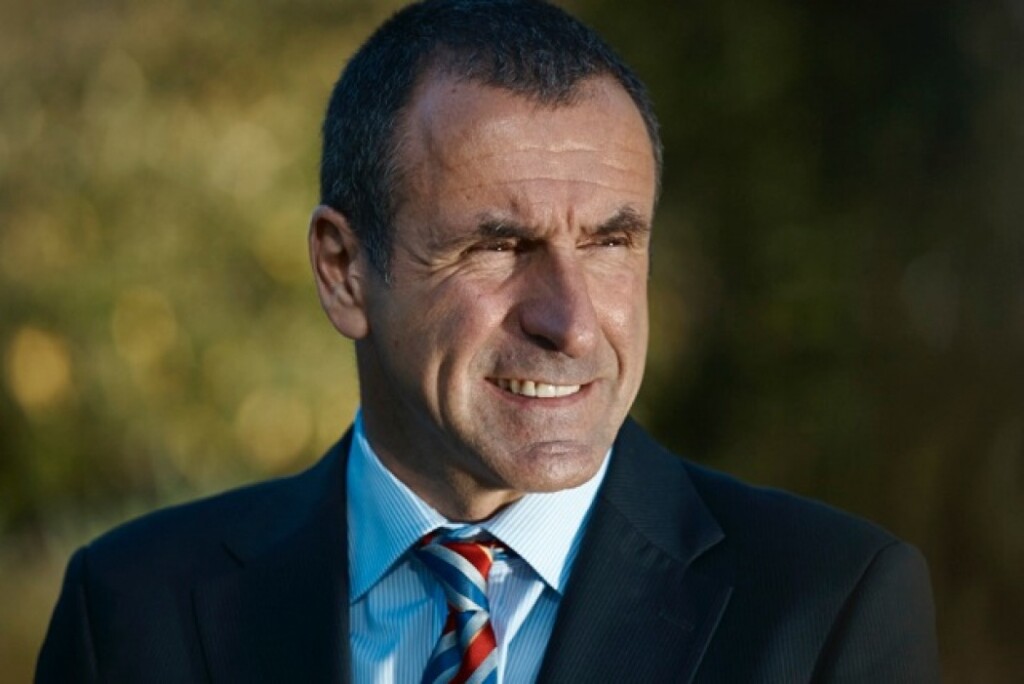
Twelve months ago, Fritz Schmidt – the latest in a long line of eminently strong foreign Technical Directors Malaysia has employed over the years – was bemoaning the fact that, JDT apart, there were few clubs adopting youth development programs and academies to help groom the best of the next generation.
With that in mind, it is devastating to hear that the Frenz United Football Academy – which bled money for 5 years after investing in international quality oppositions to come to Malaysia for the Frenz Asia Champions Challenge and Frenz International Cup – is closing down with their management bemoaning the dearth of competitive youth leagues at under-15 and under-17 level for their team to play in.
The Academy had laudable ambitions and certainly made significant financial investments, only for CEO, Rashid Maidin, to scathingly write that “NFDP (Malaysia’s National Football Development Programme) allowed us to join their tournament this year but unfortunately, it is a very badly managed third tier tournament and a waste of time for professional academies in terms of investment. It is pointless to have an academy when you don’t have a proper local youth league for the players in the country.” Ouch!
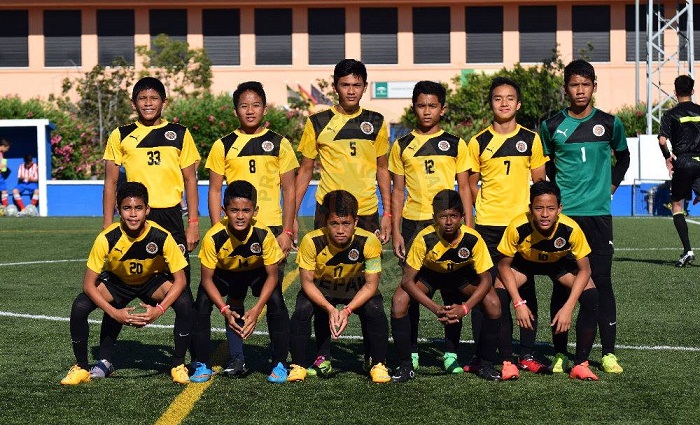
And that, surely, is the nub of the problem about Malaysia’s (lack of) youth development. Other than the National Football Development Programme team under the tutelage of Lim Teong Kim, where are the next generations of players going to emerge from? What in-depth club or state league, school competitions or leagues, or widespread youth coaching system is going to produce players able to compete internationally? Essentially, there are four establishments (Johor, Pahang & Bukit Jalil Sports Schools, plus the NFDP) who are expected to produce a batch of players good enough to go on to international standards. How?
If there are no truly competitive leagues for them to play in at 15 or 17, how will the boys learn to compete with the likes of Korea and Oman? If there are few clubs or teams to move to, where do the “not-quite-good-enough-for-the-Sports-Schools” boys learn and play their football? When the best players at 18 are legally forced to return to their home state to play in a widely derided and infrequently played President’s Cup level football, what hope is there of developing players good enough to play professional football. Where is the plan? What is the goal? And what of the plans that were set over a DECADE ago?
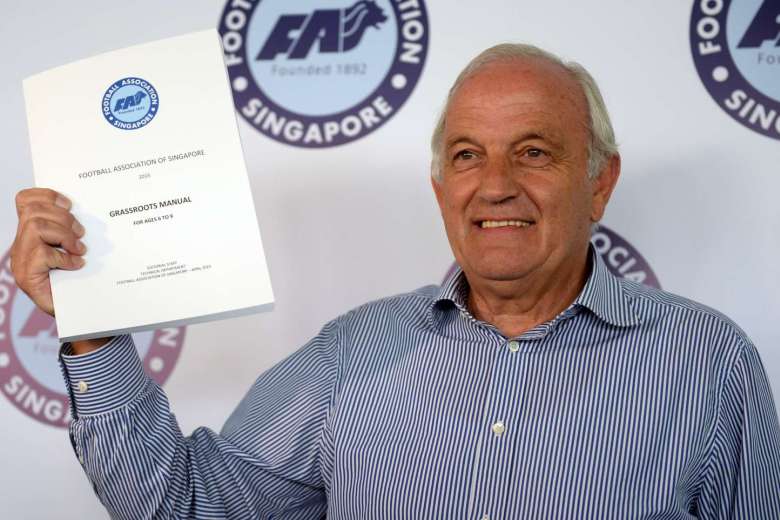
Singapore are going through a similar issue with youth development. They, at least, have a long-term plan that is starting to be put in place. Their much-criticised Technical Director, Michel Sablon, is forcing through changes in the schools and COE Leagues that should lead to a more competitive playing landscape. And there are also changes afoot in improving the coaching standards in the Island State for kids. It may take 10-years to come to fruition. But it is a concrete plan.
Johor Darul Takzim have shown what can happen if a strong leader has a vision, plans well, is well financed and is surrounded by good coaching staff. The comparison between long-term goals and planning to achieve a goal – between JDT and the national set-up is quite startling.
For football in Malaysia at the professional level, JDT being so strong isn’t good for anyone. It’s difficult to see anyone capable of offering a challenge to Johor Darul Takzim for a while to come. Kedah and Felda United have done their best this year, and Perak have shown improvements under veteran Coach Karl-Heinz Weigang. From the Premier league, Melaka may challenge whilst Penang – if they can avoid relegation – might have the set-up to do well. But in all of these clubs, it is only Felda United who seem to have made a serious effort to develop a widespread youth development policy and build for the future.
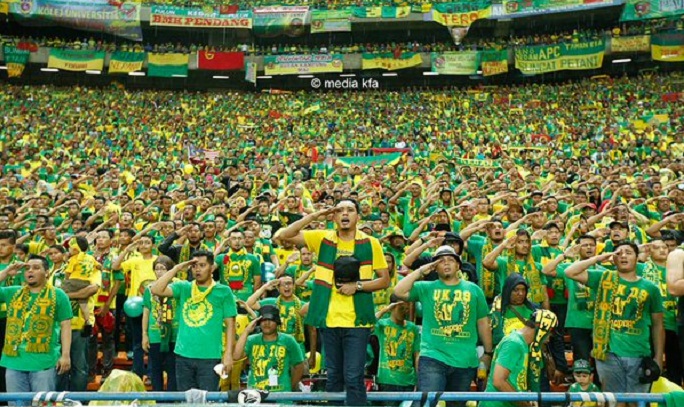
Worryingly for Malaysian football, for the first time in a decade, attendances at top-flight games are affected. In what was supposed to be one of the biggest weekends in the Malaysia football calendar last month, the full house at Alor Setar was headline news but less welcome was the fact that only 3,000 could be enticed to a delicately poised Selangor derby between the State team and their senior affiliate club in the quarter final of the same competition.
The Malaysia Cup semifinal line up means that there is the mouthwatering possibility of a repeat of the Kedah vs. Selangor match that ended the 2015 season – a re-match that may paper over the cracks of a season in which attendances, generally, dwindled. The alternative is the genuinely scary possibility of a Malaysia Cup final between PDRM and T-Team. How many will attend? 10,000? The FAM must be desperate for the former. But what if only 10,000 go to the Malaysia Cup final? What would that mean for the showpiece of Malaysian football?
Other posts by Dez Corkhill







